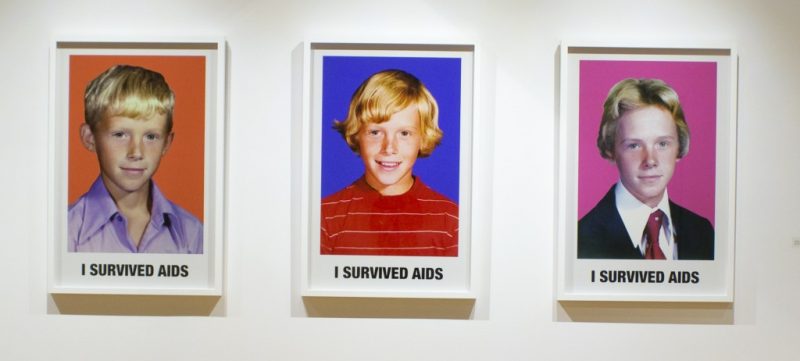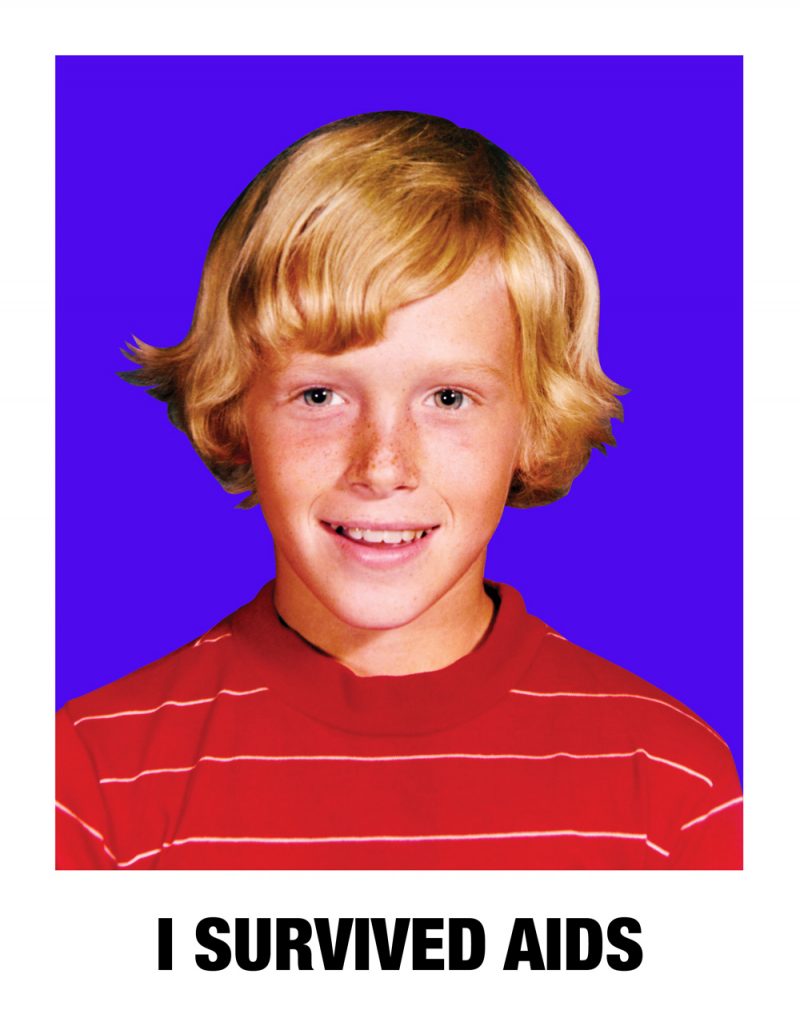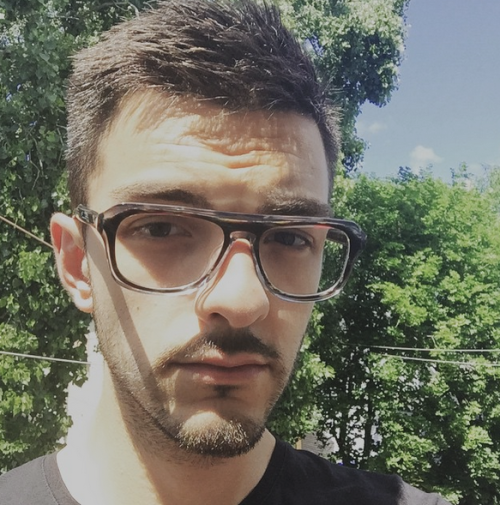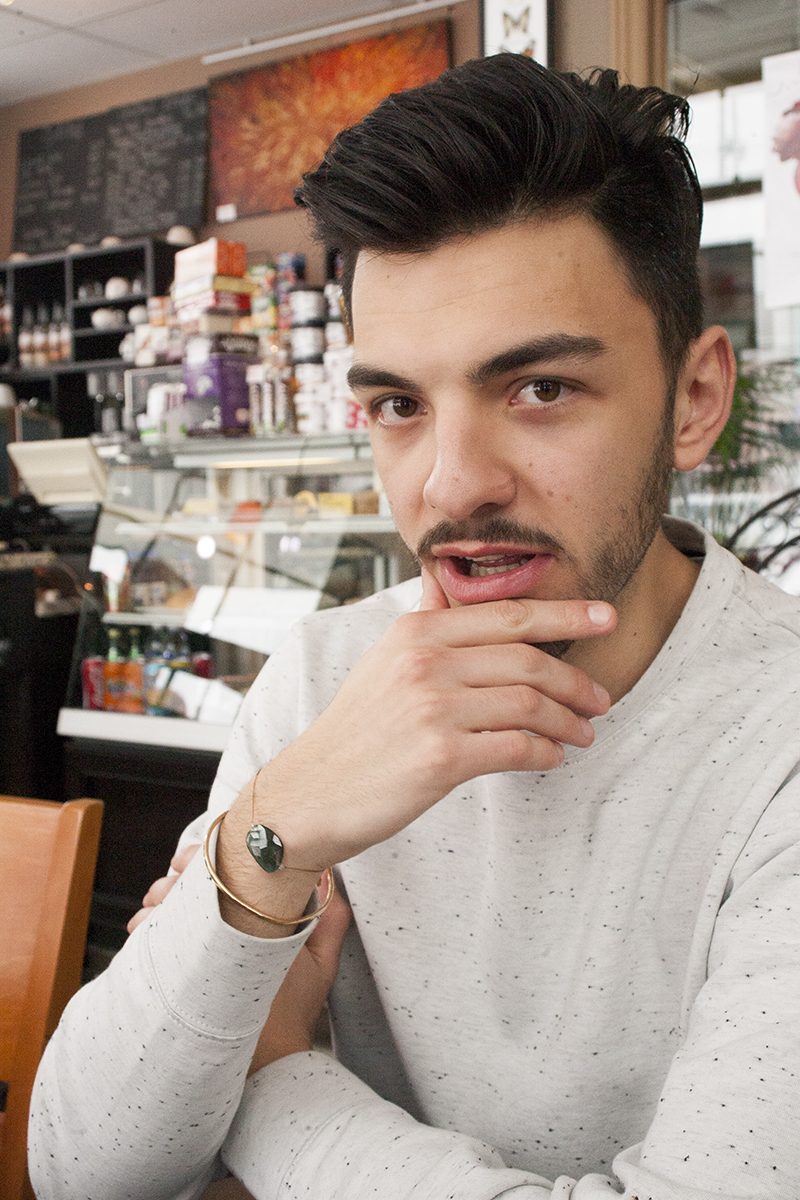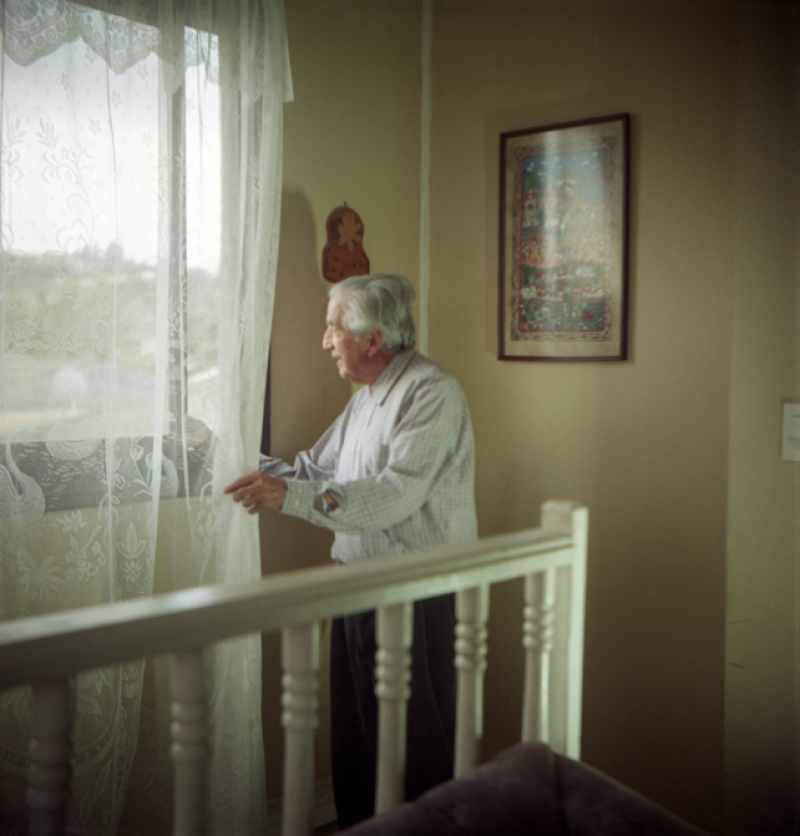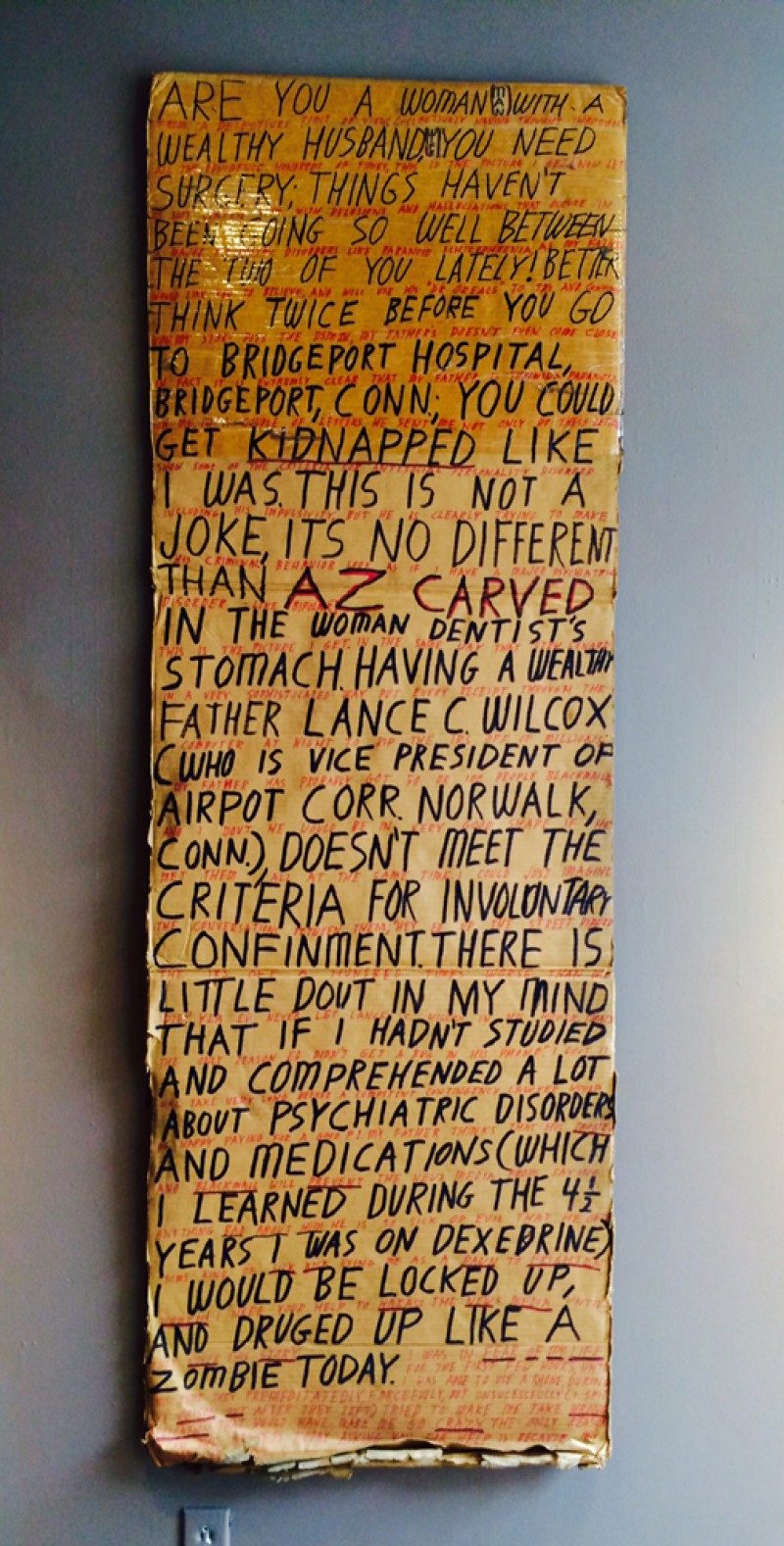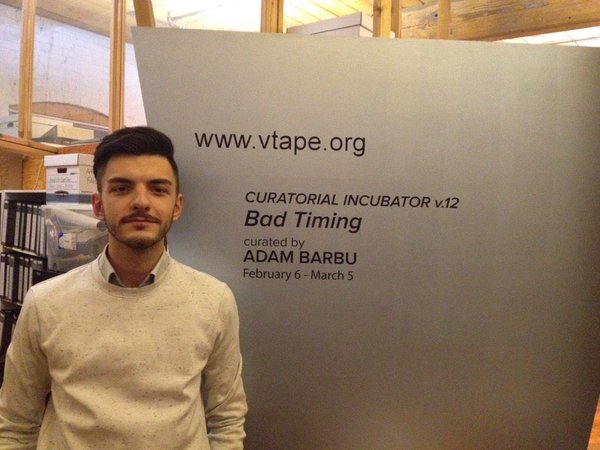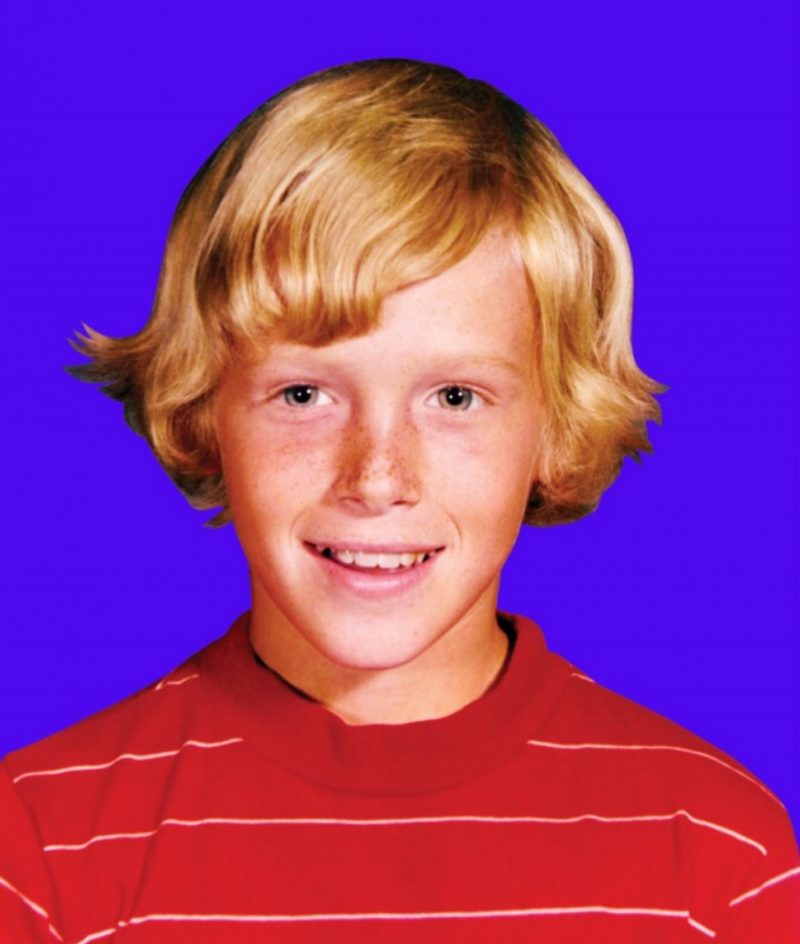Curatorial Partnership with Adam Barbu
Adam Barbu is an independent writer and curator currently living between Ottawa and Toronto. He has organized contemporary art exhibitions nationally and internationally that explore themes of cultural memory, the politics of spectatorship, and alternative modes of public engagement. For November 2014 he was the curator in residence at the Parque Cultural de Valparaíso (Valparaíso, Chile) and was recently awarded the Middlebrook Prize for Young Curators. His current critical research focuses on queer theory, “post AIDS” discourses, and early minimalist art.
Herd Magazine
THE MAGAZINE
Artists Talk: Adam Barbu
MARCH 16, 2015 BY SANDRA MANNILA
http://www.herdmag.ca/adambarbu_lpm/
Adam Barbu is a young, up-coming curator and academic currently working alongside Guy Berube at La Petite Mort Gallery that has long since resided on Dalhousie Street, and housed a number of intriguing, daring, and thought provoking exhibitions. Having known Adam for a number of years I thought it only natural to have a sit-down with him to discuss his growing success as a curator and a writer, and his big plans on moving to Toronto to pursue a Masters in Art History at the University of Toronto this fall.
S.M. When you first started working with Guy a few years back with the University of Ottawa, did you ever think it would continue this far?
A.B. I think that the internship at first was based on an interest I had in the gallery as a visitor and audience member. The great relationship that we built was created through trust and a similar creative vision, it was very organic. Whether I expected it or not I don’t know.
S.M. Do you think working with him has influenced your aesthetic, or your theoretical and conceptual interests?
A.B. Yes, of course. He has a really strong vision that is always focused on how to communicate stories that otherwise go unspoken. It has become very critical in my own creative process as well: taking a step back and considering what being part of an art gallery, or part of scene, really means and what you can do with those tools to talk about larger issues.
S.M. How did The Disciples project come about? There is a very similar feeling and driving energy behind a lot of the shows and projects that come through La Petite Mort, in regards to social advocacy and the “underbelly” of society, which is so often misrepresented.
A.B. It really came about through an invitation that Guy received from an artist he was working with in Chile in 2013 worked for the cultural centre The Disciples was originally shown at. When he came back to Ottawa we began discussing what we could do with that platform. We came up with the idea based on the fact that the cultural centre in Valparaiso is built on former prison grounds and with its original structure still in place. We questioned what it would mean for us to align with that history, and wondering if it could have the same reach, being so geographically distant.
S.M. Do you speak Spanish?
A.B. The Spanish thing is funny. It’s the first question Guy and I get concerning this project, but the answer is no. We approached the project knowing the language barrier was already built into it. We never tried to pretend that we would be able to communicate with people in a really open way, but we negotiated with that distance through the process. You can learn so much from people without having ever said anything. The way people communicate when language is a huge barrier is really through their bodies, it is about the connection you feel. We were aware that things could not go the way we imagined, but truthfully we never felt for one second that people were not open to sharing their histories. It was fantastic. There was this real spirit of love.
S.M. In your curatorial statement you mentioned the potential for this to continue in future years, and the possibility of creating similar programmes in other locations. How is that developing?
A.B. We have plans for the exhibition to travel to a number of different locations, like Buenos Aires in 2016, which is one aspect, and the other is the growth of the project itself. In one respect, it is very much related to a Chilean political context because we began there and it is our responsibility to those people. In another respect, we are trying to find ways of talking about broader issues of geographical distance and groups of people who have been marginalized or othered in some way – we want to re-communicate their stories. Currently, we are trying to grow it in Argentina with people and former political prisoners to speak about imprisonment and incarceration.
S.M. And you’ll continue to work in Valparaiso as well? It sounds like you had a very intimate, changing experience there.
A.B. Well, we kept hearing the same words from the twelve men in the portraits: “There’s more of us”. And so, the idea of having twelve people, with that number being so significant, is not meant to say that these are the twelve most important prisoners. You really have to think about who is not being seen. And while there is never a way to have a full archive of people who have been affected by a dictatorship, I think there is a way to intelligently communicate about that impossibility.
S.M. Who decided that the photographs be taken in such domestic settings? Typically, political photographs are much louder and forthright in their grandeur.
A.B. The point of the project is to talk about what political resistance looks like forty years after the fact, with people who live pretty normal lives today. So, we decided the photographs would be taken in domestic settings. It’s a very intimate view. They are not marching down the street or holding a picture of their disappeared loved one, but in their home looking very modest, and at the same time dignified. That was critical to the drawn-back nature of the portraits. They’re not trying to be spectacular.
S.M. They are very honest images.
A.B. The way that the men looked at the photographs at the opening was very special. There were really interesting paradoxes taking place with the huge, beautifully presented photographs hanging in this prison they had been living in. They were walking into a space that they were completely disenfranchised in, and it’s now many years later.
Portrait of Alfonso Godoy by Alexis Mandujano, 2014. Photo courtesy of La Petite Mort Gallery.
Portrait of Alfonso Godoy by Alexis Mandujano, 2014. Photo courtesy of La Petite Mort Gallery.
S.M. A lot of the work you have done has a very socio-political framework. Is this something you want to continue on in your masters?
A.B. My academic research and my curatorial work meet in one point, but not in an explicit political sense. I think what links those two things together are questions of disclosure and distance between ourselves – our bodies – and images. That is the problem of translation, that is the problem of active speech.
The show I Will Make You a Believer was a way to express that distance using panhandling signs Guy has collected over the years. The irony in the title is interesting because I actually think of it as a very hopeful show, and I know it’s ridiculous because these signs directly originated from the streets, but they communicate a very different message on the gallery walls. There is a discourse of guilt surrounding our relationship with homeless people, but frankly we just need a shift in mentality. The show is about agency and speech, and if the question of belief is a valid one.
S.M. When you say “believer”, what do you mean specifically?
A.B. A believer of words, that they matter. The belief that a sign can actually be met with action – the paradox, in context with this exhibition, is they haven’t been. I think the relationship between the sign and the beholder really exercises the question of belief.
S.M. What is your creative process as a curator? Do you begin with a concept or an idea and then find the artists who match up, or do see an artist’s work and go from there?
A.B. It’s a bit of both. There is sometimes a genuine intention to find works of art that fit a theme, but I also think it is important to try and understand who and what is around you. I would say it always starts with an idea, whether it came from reading a book, or seeing an exhibition, walking down the street… It really is a question of what seems appropriate in that moment, you know what I mean? It’s experimentation really. I genuinely don’t believe there is a formula. Do you think there’s a formula?
S.M. I think everyone has their own general way of doing things, a loose framework and work ethic. For me the process changes depending on the medium and the practice.
A.B. I think in this context it is about approaching a practice from a certain perspective. Like, I’m primarily interested in doing shows that are politically or socially engaged, but I would never say at the beginning of the month, for example, that I’m going to write a proposal for an exhibition that tackles the topic of homelessness. It doesn’t seem organic to me.
The way I approach the question of curating is that works of art, images, and objects are always a stand-in for discourse. These objects are never what they are, they are how we speak about them. It’s never about essentializing the object, it’s about what can take place around the object. It takes the burden of presence off of the object when you get rid of all the stupid, ontological bullshit, all that nonsense. We know that objects are not stable things, and we know that they become what we bring to them, so let’s just try and frame it that way.
S.M. Do you have any upcoming projects with La Petite Mort before you leave to pursue your Masters in Toronto? Is there anything stirring in the big TO that we should know about as well?
A.B. We have a show coming up in April called Windows From Prison. It is in collaboration with the American Embassy, and the artist Mark Strandquist, who has developed this project to highlight photography as social practice. He sent out correspondence to high security prisons in the States and mass letters written for prisoners, which read “If you had a window in your cell what would you look onto in your past?” When the inmates write back to him with a memory from their childhood or recent past Strandquist sends a local university student to the site to photograph it for them. When Mark is here in April he will also be doing various outreach programs with us as well.
For myself, I have a show up at V-Tape in Toronto ending in March, as well as another show in Toronto this summer, which is much more in line with my own academic research. The exhibition will be dealing with the question of minimalism and HIV positive status. All of the artists are HIV positive.
Written by Sandra Mannila
Sandra Mannila is a visual artist, creative writer, and blog contributor with a background in Fine Arts (BFA uOttawa). In her spare time she crafts, writes, and weaves in her at-home studio typically in the sweet company of bourbon, Leonard Cohen, and her cat Samson. Apart from Herd, she writes and photographs for The Big Eat Ontario, as well as her own food blog, The Crumby Trail. Sandra has been involved in publication for several years ranging from production and design, to photography and writing. Follow her on Instagram and Twitter.
///////////////////////////////////////
INTERVIEW with ADAM BARBU
WINNER of the MIDDLEBROOK PRIZE FOR YOUNG CANADINA CURATORS:
http://middlebrookprize.ca/curators-talk-by-adam-barbu/
Curator’s Talk by Adam Barbu
“I’d also like to thank the Jury, who is well represented here, for letting this project be the 3rd Middlebrook Prize for Young Canadian Curators.
More importantly, I’d like to say a word about how it all began. I used this platform as a way to experiment with certain ideas that I had previously been engaged with as a Curator, but even the title – I think this word “queer” is sometimes misinterpreted and misunderstood in contemporary culture. So, to have the Jury’s support in making this come to be is really important because it proves that we are building dialogue around certain themes that are not always spoken about in public. I am very grateful for that. I am very happy that each of these works might inspire some kind of thought or discussion that might go beyond the gallery today. Of course, that is a welcome thank you as well.
I’d like to keep the structure of the talk kind of informal – I always prefer when a curator or an artist speaks and there is more of a discussion. I you have questions, I am happy to engage with you and talk more about them.
I thought it might be relevant to discuss what I have been doing as a Curator for the greater part of 3 years, and as a writer as well. It’s not easy to be a young person in Canada, and trust your creative instincts. I have to say that living in living in Ottawa for the greater part of 4 years, I had the support of a mentor and colleague, Guy Bérubé. He’s a gallerist, director and art dealer in Ottawa. He really is the spark that makes me tick in my own creative and curatorial work. Guy and I have worked together for as long as I have been in Ottawa. It started with an internship and then we became creative collaborators. Examples of projects we’ve done previously, and more recently:
In November, we were in Valparaiso, Chile and we did project called “The Disciples” where we brought together 12 former political prisoners from the [Augusto] Pinochet regime and we re-situated large scale portraits of these men in the former prison and torture facility where they were once held. Ironically, [this prison] is now a fully functioning cultural centre. That’s one example.
Another is a related project called “Windows from Prison”. We did that in April this year. This was a project that was also initiated by the US Embassy in Ottawa. That Project revolved around an artist called Mark Strandquist and he worked with individuals in maximum-security prisons across the States. The resulting exhibition was based on the materials and writing that came from Strandquist’s interaction with the prisoners.
These are examples of how I “tick” creatively. More so, they relate to what is going on in this space in less explicit ways, but in my own creative process. I see the Middlebrook Exhibition as an extension of this in the sense that there is a move taking place in my own thinking away from spectacular logic towards the indecisive, the unresolved and contingent politics of everyday resistance that are so often hidden view in our everyday lives.
To provide some context, I want to read a bit about the projects. The Queer Feeling of Tomorrow explores themes of doubt, resilience and agency through the work of six practicing local, national and international artists. They are Sunil Gupta, John Hanning, Shan Kelley, Julia Martin, David Poolman and Laurel Woodcock. Each of these artists worked to locate the complex unspoken and oftentimes inexplicable excesses of identity and community.
In tandem with this Exhibition, we are producing a workshop, taking place at the end of November, entitled Queer Futures and run by Pearl Van Geest. The idea behind the workshop is to support the Exhibition with dialogue and exchange with high school and university students. These people will come together in one space to build a catalogue of the Exhibition, which will be available online shortly.
The idea of A Queer Feeling of Tomorrow:
It suggests a playful uncertainty of our personal and political futures in a supposedly post-AIDS historical moment. Together these works construct an amalgamation of obstructed documents, fragmented biographical notes and half emptied out forms held in a continuous flux of contextualization and re-contextualization and de-contextualization. So, it’s this ongoing process of exchange between the works, and against them as well.
The Exhibition expresses a double play, in this respect, of optimism and skepticism, tracing a spirit of life affirmation that is, at the same time, a kind of restless doubt. One the one hand, these works trace a kind of candid levity and, on the other, they embody a self-conscious facetiousness and also harsh irony.
Unlike what many of you are thinking, based on the title, the Exhibition is not about Queer Art or sexual identity proper. Neither is it interested in documenting the changing face of LGBT acceptance in mainstream western culture. Instead, this queerness I am trying to locate in the Gallery space is really about a provisional retreat from ideas of willful or transparent political speech. The sensibility that all of these artists embody thrives within an altogether inconsistent formal language that is composed of unfinished sentences, circular word babble, abandoned signs, precarious historical revisions and so on. Given the face that, today, there is no shortage of exhibitions that focus on the relationship between AIDS issues, late twentieth century identity politics and related forms of activist artistic practices, I think it is important to pose a question that has motivated my thinking creatively throughout the course of these three years that I have been speaking about. How do we situate or cultivate queer thinking in society, in the gallery and otherwise without submitting to problematic cultural essentialisms or the rhetoric of a post-everything identity politics?
To address the challenges of this intentionally difficult question raises what I am attempting to pursue in this Exhibition: a sense of positive differentiation that can’t be reduced to the logic of queer representation, as we might traditionally think about it and, therefore, the didacticism of a rigid, objectivist historical narrative of seamlessly unfolding events in time. In other words, this means exploring a language of difference that is not simply interested in verifying the injurious effects of hetero-sexist or homophobic discourse in culture that might seek to present works of art and the lives of artists as they actually occur in society.
It’s worth stating that, in July, I produced an Exhibition in Toronto, at a small gallery, titled A Minimal Doubt. Many of the ideas in this space are an extension and continuation of those themes I was dealing with. That Exhibition brought together three artists, all Canadian, Andrew McPhail, Vincent Chevalier and Shan Kelley, who is also here in this space. This Exhibition was nine works in total highlighting cross sectional readings between HIV-positive status and aesthetic value proposing a certain deferral of self-knowledge through queered forms of language and text. The title, A Minimal Doubt, is intended to raise a problematic. When we state that doubt is minimal, it evokes a kind of implicit hope.
I’m also interested in this term “doubt” because it keeps the ideas of inaction and obsolescence at the centre of the discussion. I would say this is the essential kernel, or the moment of decision that inspires this Exhibition and the works it contains.
Now, I’ll turn to the artists themselves. Let’s begin with David Poolman, who has two works here. The first is titled Protest Cancelled Due to Rain, which is the sculptural object in the plinth. The second is Average Grief, which is the black flag. My thinking behind these two works is based on the thinking that the sign and the flag are the two most iconic forms of political will that we know today. And, to see the way that David has half-emptied out both of these objects with the precarious indecision becomes a perfect welcoming gesture to the other works that follow in this Exhibition. The striking element of the signs is that they are shrunken down and piled up so that they have a sense of a loss of identity, and become new objects in the world.
The second is Sunil Gupta, who is just behind the bar. There are three works from his series Sun City, created in 2010 and commissioned by the Pompidou Museum in Paris. It was originally exhibited as 16 large-scale photographs. They are on loan from Stephen Bulger Gallery in Toronto. The idea behind these works is that they closely reflect, in narrative form, Chris Marker’s very iconic 1962 film La Jetée. Many of you, if you are students, are familiar with that title. What makes these photographs interesting is that there is a clearly something absent here. The elliptical form of the original narrative is retained so that the protagonist unknowingly sees his own death in the beginning. But it also becomes the last frame of this lost film. Gupta writes “the nuclear apocalypse found in Marker’s film has been replaced by the ongoing HIV/AIDs crisis. Furthermore, the heterosexual possibility of romantic love, which drives the original character, has been replaced with an immigrant homosexual one. Sunil’s works are important for me in this space because, not only is he an artist I look up to with a great deal of respect in my own studies, but I think that these works really initiate these themes in a “beautifully fragmented way.”
The next is John Hanning. His three works here are called I Survived AIDS, originally created in 2013 but he created a special edition series for this show. These three objects, with obviously striking subject matter, are authentic middle school portraits of the artist as a young child. They are re-positioned and acting as a background for a future of violence of stigma that he could not, and did not, know at that point.
The next work to point attention to is Julia Martin’s Uneasy from the series You are Talking to Yourself, which is an altered image, ink-jet print. Each of the works in this series, but this one in particular, is striking with respect to the other works in the Exhibition, is comprised of a different broken off adage or an axiom or even explication that is re-purposed on a found, digitally accessible, public domain image. That’s Julia’s work. The other works in the series are fantastic. If you get a chance to check out her website, I would really encourage you to do so.
Laurel Woodcock is the neon work on the last wall here. The title is Untitled, but it does have an extended one, which is “A Film by John Baxter (1946), A Song by the Beatles (1969), An Album by Nina Simone (1971), and a Novel by Tom Holt (1993)”. The work was originally created in 2011 but I’m really happy to see it here in this space. I think it adds a certain, almost interruption, of the bodily phenomenological encounter of the artwork in this space. Of course, what’s striking here is that we are forced to look down on a phrase that is so, I don’t even know how to phrase it, “precariously familiar” and also so distant. We all know this phrase, but to see it in a different context, especially with these surrounding works, adds a new dimension on this idea of agency.
With John, Sunil, Julia’s and also Laurel’s work, the idea of appropriation and quotation is something to stress here, especially when we are talking about themes of self-knowledge and what this means to contemporary culture.
Lastly, I’d like to draw focus to Shan Kelley’s two installations. He is a really phenomenal young artist, who I am glad to be able to support. The mixed media installation before us here Mostly Blanks (2012). A note on the materiality here: “Nothing to worry about” is painted in an industrial powder coat spelled out in standard military lettering along a group of 22 authentic military canisters. You’ll note that the markings on the side: some bear the text “Blank” and some bear the text “Small Arms”. When we position this in the context of Shan’s interest in critically exploring his own HIV undetectable status, the intersection of this medical-militaristic and colloquial discourse is important to stress here.
Finally, the work, which seems like it is in the middle, is called Of Hope and Sickness (2013). It is a diptych taken at two very different times in the artist’s life. I think that it encapsulates the idea of this Show, so I wanted to read some of Shan’s own words. “In the moment this photograph was taken, my mother had managed to see past the difficult and mysterious illness which plagued me, and decided to capture the humour in my present vulnerable state without pity or victimization. After such a brutal and lengthy sickness brought me to lie here amid the sanctity of my mother’s comfort, I tested HIV-positive several days later. After diagnosis, I would return again to the sanctity of that couch in my parents’ home and regress into that very infantile state, which was once just foreshadowed. Here, four years later, watching my daughter sleep, triggered contemplation on the innocence of the present moment and contemplation on a passage in life that I never thought I would never live to see. Reflection, now, on this dichotomy is the preservation of a moment which serves to frame my entire relationship with my own mortality, perseverance and hope.”
Considering all these different artworks and the amazing diversity here, it becomes clear that each of these artists illustrates possible futures that on the one hand are taken as forms of optimism and on the other hand are expressions of real doubt. Really, this becomes the choice of the spectator. This is my thinking behind this Exhibition, that we all have to make a choice of how to view these works and what we take from it — if we step into optimism, if we fall into grief, what this negotiation feels like in the moment. Taken to the extreme, then, this slippery double talk that is staked between yesterday and tomorrow kind of frames an absurdist, and productively absurdist, space in my view. Within this framework, I’d like to end this brief talk by stating that each work both pursues and cultivates the integrity of the unspectacular for its own sake. This achieves a certain disruption of the conventional and romantic notions that we might attach to what it means to have a personal or political transformation. In my estimation, it is this very careful negotiation between optimism and doubt that really emerges to us as queer. That is what I find interesting about that word in this space.” – Adam Barbu
